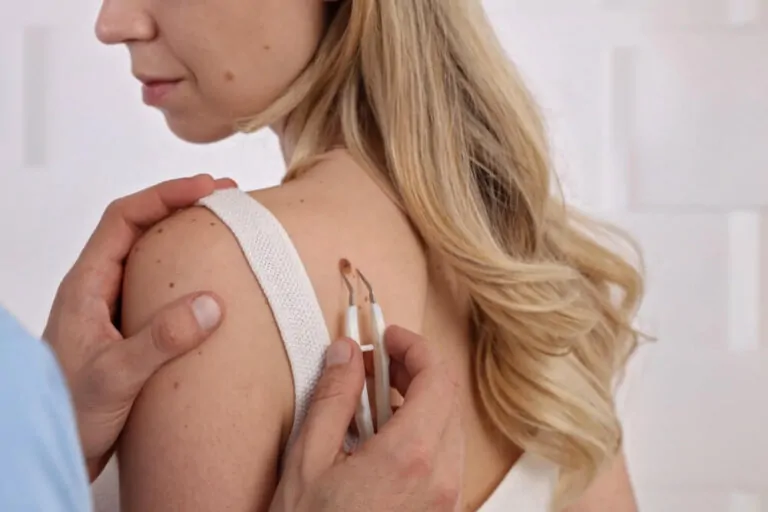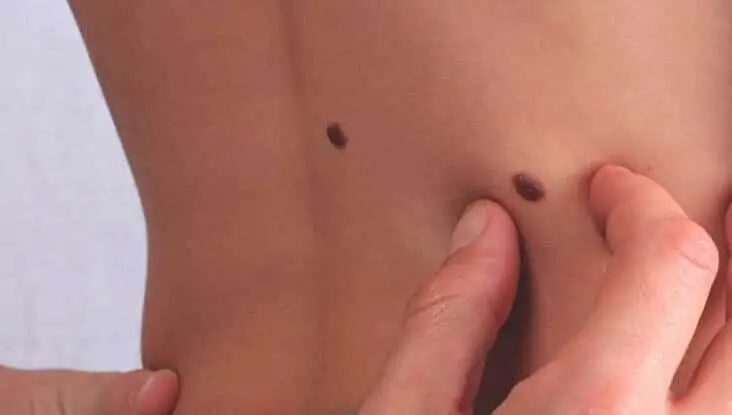 What Is Mole Removal?
What Is Mole Removal?
Mole removal is a medical or cosmetic procedure used to eliminate moles—also known as nevi—that form due to melanin-producing cells called melanocytes. While many people choose mole removal for aesthetic reasons, others may do so for health-related concerns, especially when there’s a risk of skin cancer.
Moles can develop during childhood or adolescence and may change in color, shape, or size over time. Most moles are harmless, but some can evolve into melanoma, making it essential to monitor their characteristics.
Why Do Moles Appear?
Moles form when melanocytes cluster together rather than spreading evenly across the skin. These pigmented skin growths may appear flat or raised and vary in color from light pink to dark brown or black. Factors that influence their appearance include:
- Genetics
- Sun exposure
- Hormonal changes (e.g., pregnancy or puberty)
- Skin type and melanin production
Types of Moles
Different types of moles include:
- Junctional Nevus: Flat, pigmented, located between the epidermis and dermis.
- Compound Nevus: Raised moles where cells spread deeper into the skin.
- Dermal Nevus: Flesh-colored or slightly raised, located entirely in the dermis.
- Blue Nevus: Appears dark blue due to deep pigmentation.
- Congenital Nevus: Present at birth and varies in size. Larger types may carry a cancer risk.
- Halo Nevus: Surrounded by a white halo of depigmented skin.
- Freckles & Lentigo Solaris: Often mistaken for moles; caused by sun exposure.
- Dysplastic Nevus (Atypical Mole): Irregular shape and color, may indicate higher melanoma risk.
When Should You Consider Mole Removal?
You should consult a specialist if your mole:
- Is asymmetrical or has irregular borders
- Changes in color, shape, or size
- Itches, bleeds, or becomes painful
- Appears after the age of 25
- Interferes with clothing or jewelry
- Causes aesthetic concerns
Early detection and treatment are crucial for moles with suspicious features, especially if you have a family history of melanoma.
Mole Removal Methods
1. Laser Mole Removal
Laser treatments are effective for small, benign moles. A focused laser beam breaks down pigment cells without damaging surrounding tissue. Ideal for facial moles or hard-to-reach areas. No stitches or downtime required.
2. Surgical Excision
This involves cutting out the mole and surrounding tissue under local anesthesia. It’s used for larger or deeper moles. The removed tissue is often sent to pathology for examination. Aesthetic sutures minimize visible scarring.
3. Shave Excision
The mole is shaved flush with the skin using a surgical blade. Best for raised moles that don’t require deep removal. Minimal scarring and no stitches needed.
4. Cryotherapy
This method freezes superficial, non-cancerous moles using liquid nitrogen. A blister forms and falls off naturally during healing.
 Mole Removal Surgery: What to Expect
Mole Removal Surgery: What to Expect
- Consultation: The mole is evaluated with a dermatoscope.
- Anesthesia: Local anesthesia ensures a painless procedure.
- Procedure: Depending on the mole type, excision or laser is performed.
- Duration: Typically 10–20 minutes per mole.
- Pathology: If cancer is suspected, the mole is sent for histological analysis.
Recovery After Mole Removal
Mild redness and scabbing are common after laser or cryotherapy.
- Sutures (if used) are removed after 7–10 days.
- Avoid sun exposure and keep the area clean.
- Healing time: 1–4 weeks depending on method and mole size.
- Scar treatment creams may be recommended.
With proper care, any scar will fade over time—often becoming a faint, barely visible line within a year.
Does Mole Removal Leave a Scar?
Scarring depends on:
- Mole size and depth
- Removal method
- Your skin’s healing ability
Laser removal typically leaves no scar. Surgical excision may result in a thin line, which fades with time. Scar creams or laser treatments can enhance healing.
Are Moles Removed for Cosmetic Reasons?
Yes. Even if a mole is not medically dangerous, many individuals choose to remove them from visible areas like the face, neck, or arms for cosmetic improvement.
Skin Tag vs Mole: What’s the Difference?
- Moles: Pigmented, flat or raised, may be cancerous.
- Skin tags: Flesh-colored, soft, hang from the skin, and are always benign.
Both can be removed using similar techniques like laser or cryotherapy.
Are At-Home Mole Removal Remedies Safe?
No. DIY mole removal creams or cutting methods can lead to infections, scarring, or incomplete removal. Always consult a dermatologist or plastic surgeon.
Will the Mole Grow Back?
Most removed moles do not return. However, freckles or sun-induced spots may reappear if proper sun protection isn’t used. SPF is key to prevention.
Before & After Mole Removal
- Clearer, even-toned skin
- Boost in confidence—especially after facial mole removal
- Minimal to no scarring with modern techniques
- Final results become fully visible within 1–3 months
Cost of Mole Removal in Turkey
Mole removal cost in Turkey varies based on:
- Number of moles
- Size and depth
- Method used (laser or surgical)
- Need for pathology
FAQ – Mole Removal
Is mole removal painful?
No. Local anesthesia ensures the procedure is painless.
How long does it take to heal?
Most patients recover within 1–3 weeks.
Can all moles be removed with laser?
Only small, non-cancerous moles are suitable for laser. Suspicious moles require surgical excision and pathology.
Who performs mole removal?
Plastic surgeons, dermatologists, and general surgeons can perform the procedure based on the mole’s location and type.
Is it safe?
Yes, when done by a qualified specialist using sterile, professional equipment.

